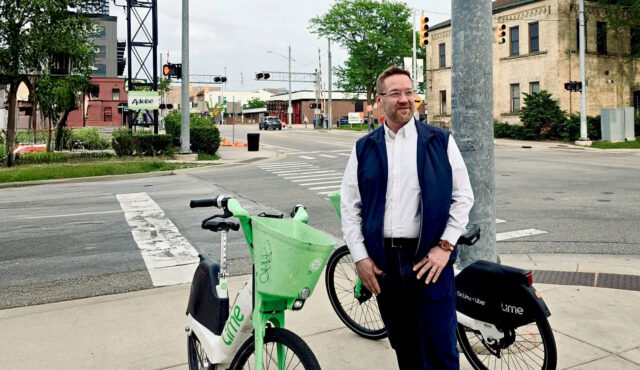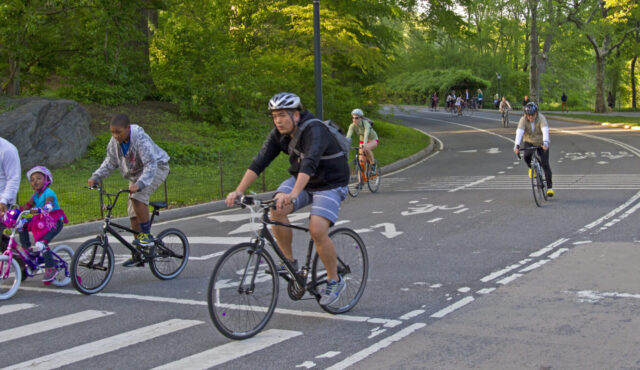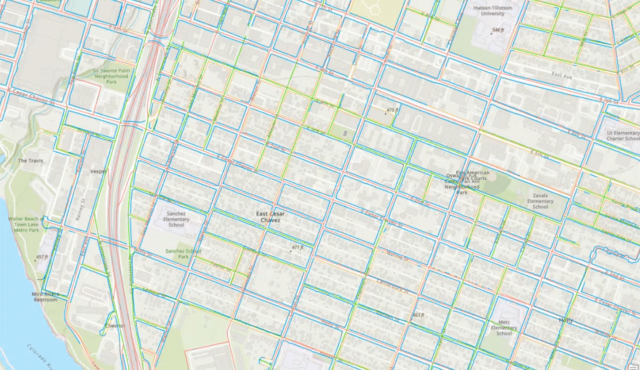When the response to the coronavirus crisis started to really hit hard in mid-March, the drop-off in car traffic in the Mid-Atlantic and Northeast was extraordinary. As millions of people stayed at home, the air became cleaner almost overnight, traffic noise abated, and we got an unexpected glimpse of a world without quite so many cars.

We are also getting a glimpse into the treasure-trove of traffic data that’s available today to help inform transportation decisions. We are discovering that perhaps people want to travel less by car and public transit and more by foot, bike, and micromobility in the future. There’s also reason to suggest that even once businesses re-open, there might be less travel overall thanks to flourishing video-conferencing options.
Here’s a collection of data related to COVID-19’s impact on transportation and that I’ve found particularly eye-catching.
Streetlight Data has a nifty VMT Monitor that allows you to see daily counts of vehicle miles traveled, tracked by every single county, compared to the average figure in January 2020. On Friday, April 24, vehicle traffic in New York City was down an extraordinary 93%; in my home region of Richmond, VA the numbers were down by around 70%. Even sparse rural counties in the Western United States are seeing the kinds of declines usually associated with Christmas Day or the end of school.
A personal favorite of mine, Unacast has created a Social Distancing Scorecard that tracks overall travel trends (nationally, travel has fallen by up to 55%), the drop in non-essential trips, and the decline in “human encounters.” Montgomery County, MD (home to our headquarters) gets a C grade overall – it’s doing well in the first two trip reduction categories, receiving a “B”, but is not reducing the frequency and density of encounters sufficiently, where it gets an “F”.
Over the past weekend (April 25-26), a new type of data started to appear. The Guardian (UK) reported on travel information captured by TomTom, the SatNav company. They maintain a Traffic Index of 416 global cities and are able to track the changes wrought by COVID-19 in close to real time. One takeaway: it’s humorously reassuring to know that even at 10pm on a weekday evening in the midst of a global shutdown, there’s still a back-up on I-95 south of the Occoquan River. The point of the article, though, is to show how cities such as Shanghai and Wuhan are coming out of the health emergency…complete with a seemingly inexorable return to pre-pandemic levels of traffic congestion, albeit more gradual than the decline months earlier.
What has really caught my eye in this endlessly captivating sea of information, however, are three opinion polls from Europe. Perhaps not surprisingly, public transit use is projected to fall by 20% in the United Kingdom (more than 40% in London), according to a poll by SYSTRA and reported by the BBC. Fortunately, a quarter of those reducing transit use expect to be working more from home and not traveling at all. Two-thirds (67%) of those polled believe that video-conferencing and other technology will replace some or all business trips and meetings—an important opportunity, perhaps, to eliminate the “I need the car for a meeting [somewhere else]” explanation for not using transit or biking for the daily commute.
Forbes reports on a survey of 20,000 members of the AA (the Automobile Association in the United Kingdom). The AA-Populus survey found that 22% of drivers want to drive less after the crisis and 36% plan on walking and/or cycling more after their release from lockdown. Eleven percent say they want to work from home.
In Brussels, local researchers surveyed a thousand people and found that more than a third (36%) expect to use public transit less after the crisis, while 34% say they will use bikes or scooters more frequently and 10% say they will use their cars more. Additionally, they found that 47% want to telework more, 71% would favor widening sidewalks/cycle paths even at the expense of space for cars, and 77% think the current crisis is an opportunity to change mobility policies.
There’s going to be a lot to unpack from numerous surveys and polls like these moving forward. For example, the fear of crowded buses and trains right now is understandable, but in the longer-term transit will remain an essential part of the transportation system – even if it operates differently than it did way back in…uh, February.
Finally, I think it’s highly instructive to learn that people really do see the COVID-19 crisis as an opportunity to change the way we think about transportation and related issues. Hopefully we can take advantage of this moment, be deliberate and thoughtful about long term changes, and not default to a pre-pandemic “normal” due to inaction. Lack of information won’t be the issue…the question will be whether we have the wisdom to use all this data well.



